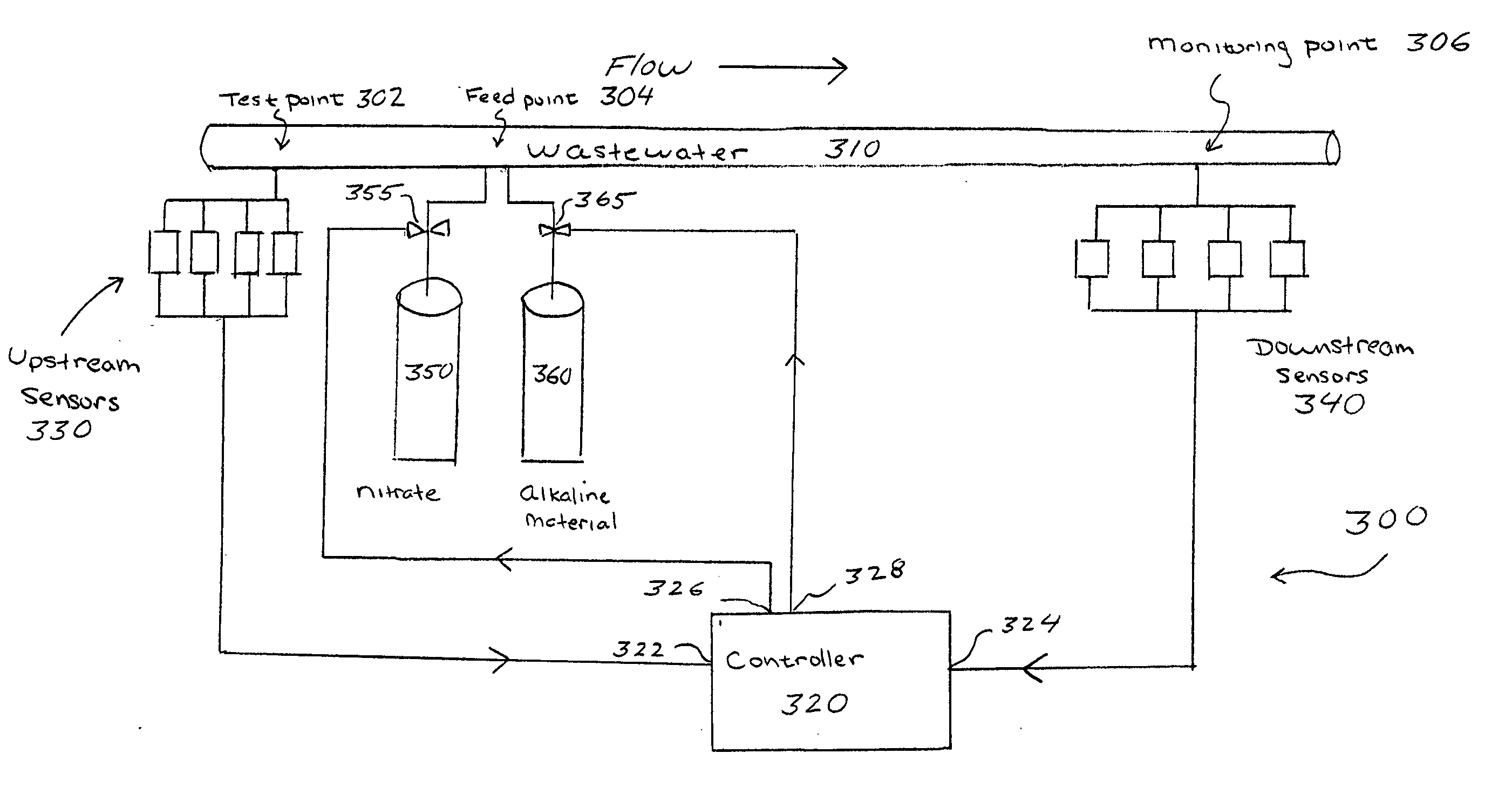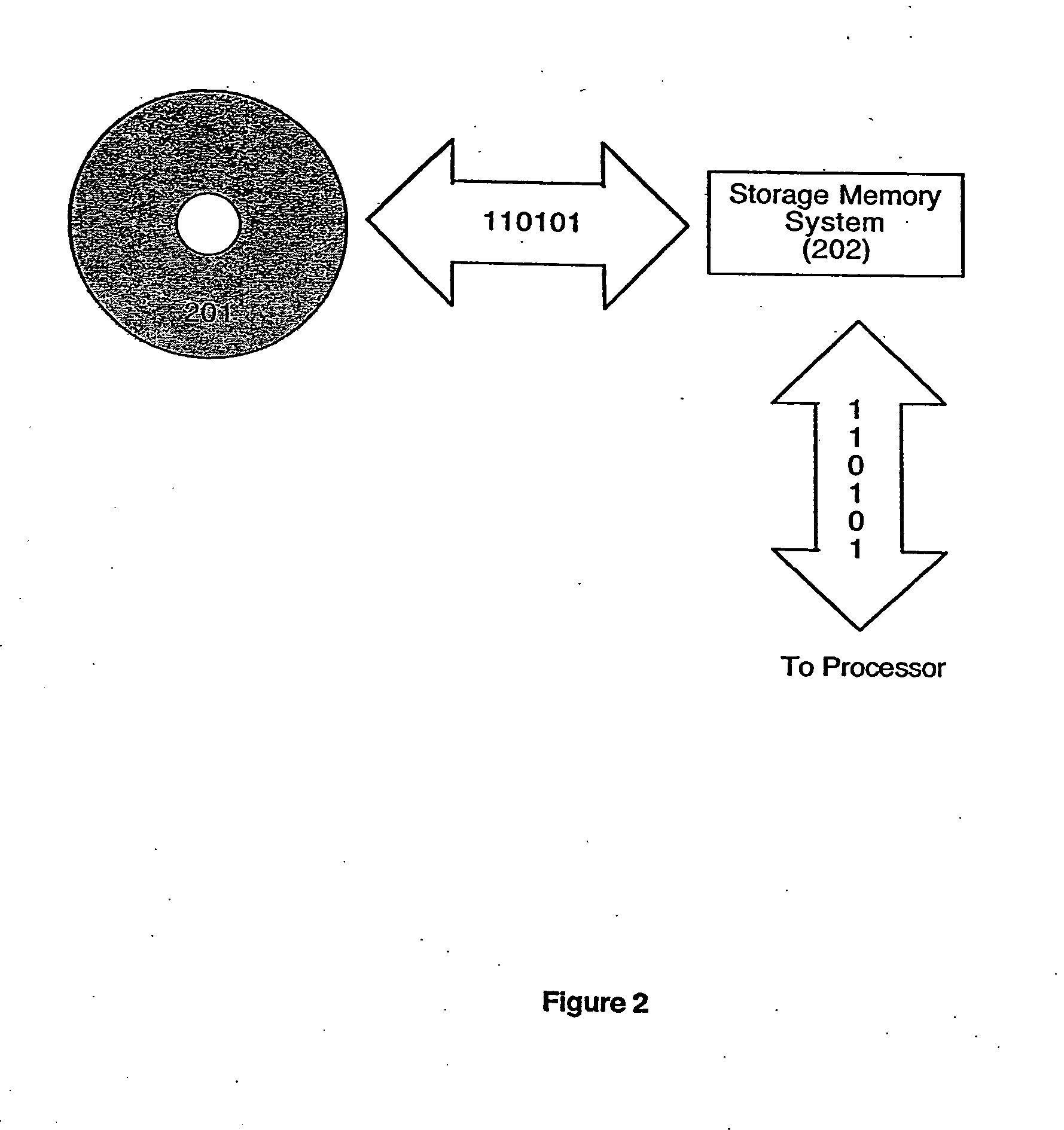Methods and apparatus for reducing nitrate demands in the reduction of dissolved and/or atmospheric sulfides in wastewater
a technology of atmospheric sulfide and nitrate, which is applied in the direction of biological water/sewage treatment, other chemical processes, separation processes, etc., can solve the problems of reducing the ph of the wastewater system, adversely affecting the operation of the wastewater treatment plant, and not being able to achieve satisfactory odor control on a continuous basis
- Summary
- Abstract
- Description
- Claims
- Application Information
AI Technical Summary
Benefits of technology
Problems solved by technology
Method used
Image
Examples
examples
[0083] During a first series of experiments, Applicants observed that when an alkaline material, such as caustic soda, was added to a wastewater stream in a relatively small quantity along with a nitrate containing compound such as BIOXIDE.RTM. or BIOXIDE-AQ.RTM., available from United States Filter Corporation, (an odor control chemical containing calcium nitrate or calcium nitrate with anthraquinone, respectively), the resultant effect on both atmospheric hydrogen sulfide and dissolved sulfide was greater than that which would be expected from the combined effect of the two processes acting independently. In particular, there was a synergistic effect in which the concentration both atmospheric hydrogen sulfide and dissolved sulfide was reduced to desired levels, while the amount of nitrate containing compound added to achieve such levels was reduced by as much as 50% relative to levels obtained with nitrate addition alone.
[0084] During this first series of experiments, it was furt...
examples 1 and 2
[0085] Two feed sites for introducing nitrate-containing odor control chemicals (BIOXIDE.RTM. and BIOXIDE-AQ.RTM., available from United States Filter Corporation) at wastewater pump stations where chosen. Samples of wastewater being pumped were analyzed to determine theoretically how much alkaline material (sodium hydroxide) should be added at the feed sites in order to raise the pH by one unit (calculated to be 126 gallons of 50% caustic soda per one million (10.sup.6) gallons of wastewater flow).
[0086] Based on these preliminary observations, caustic soda addition equipment was installed at the feed sites, but as a cautionary step the caustic soda addition rates based on the flow from the feed sites was preselected to be at only 50% of the calculated value to raise the pH by one unit. Thus the pH shift was expected to change less than one full pH unit. Surprisingly, however, with the addition of nitrate at traditional dosage (via BIOXIDE.RTM. and BIOXIDE-AQ.RTM.), a full one unit...
example 3
[0090] A series of tests were conducted over a period of 120 days at a wastewater treatment facility. The distance from the feed point (a pump station) to the monitoring point (a discharge manhole) was approximately one mile, plus or minus one-tenth of a mile, with a detention time that was measured (on one occasion) at approximately 90 minutes. During this series of tests, the following parameters were measured twice weekly: pH, atmospheric hydrogen sulfide (H.sub.2S), liquid phase sulfide, temperature, and residual nitrate.
[0091] Example 3 is divided into nine time periods during which the independent variables (the amount of the nitrate containing compound and the amount of alkaline material) were adjusted and maintained and their effect upon the dependent variables (the level of atmospheric hydrogen sulfide, the level of liquid phase sulfide, and pH) was monitored.
[0092] The data of Example 3 demonstrates that the addition of a nitrate containing compound, in combination with th...
PUM
| Property | Measurement | Unit |
|---|---|---|
| distance | aaaaa | aaaaa |
| diameter | aaaaa | aaaaa |
| diameter | aaaaa | aaaaa |
Abstract
Description
Claims
Application Information
 Login to View More
Login to View More - R&D
- Intellectual Property
- Life Sciences
- Materials
- Tech Scout
- Unparalleled Data Quality
- Higher Quality Content
- 60% Fewer Hallucinations
Browse by: Latest US Patents, China's latest patents, Technical Efficacy Thesaurus, Application Domain, Technology Topic, Popular Technical Reports.
© 2025 PatSnap. All rights reserved.Legal|Privacy policy|Modern Slavery Act Transparency Statement|Sitemap|About US| Contact US: help@patsnap.com



